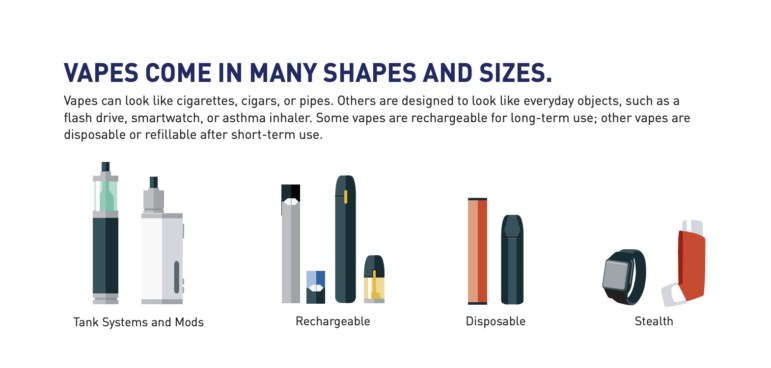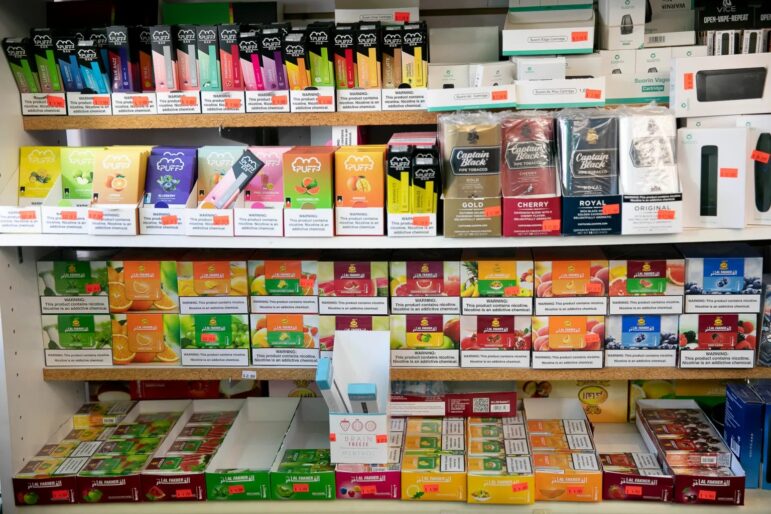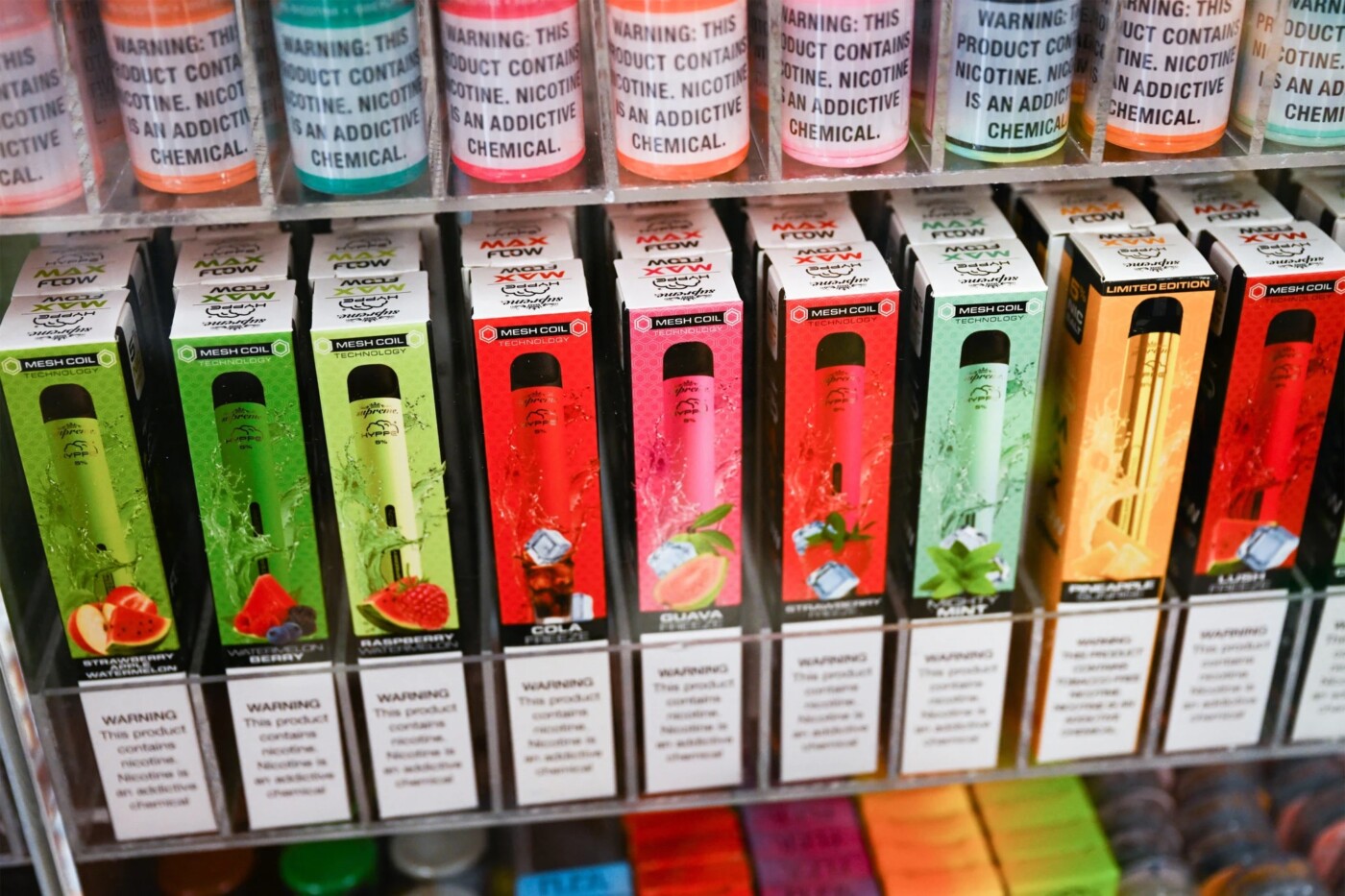When the FDA first asserted the authority to regulate e-cigarettes in 2016, many people assumed the agency would quickly get rid of vapes with flavors like cotton candy, gummy bears, and Froot Loops that appeal to kids.
Instead, the FDA allowed all e-cigarettes already on the market to stay while their manufacturers applied for the OK to market them.
Seven years later, vaping has ballooned into an $8.2 billion industry, and manufacturers are flooding the market with thousands of products — most sold illegally and without FDA permission — that can be far more addictive.
“The FDA has failed to protect public health,” said Eric Lindblom, a former senior adviser to the director of the FDA’s Center for Tobacco Products. “It’s a tragedy.”
Yet the FDA isn’t the only entity that has tolerated the selling of vapes to kids.
Multiple players in and out of Washington have declined to act, tied the agency’s hands, or neglected to provide the FDA with needed resources. Former Presidents Barack Obama and Donald Trump both have prevented the FDA from broadly banning candy-flavored vapes.
Meanwhile, today’s vapes have become “bigger, badder, and cheaper” than older models, said Robin Koval, CEO of the Truth Initiative, a tobacco control advocacy group.
The enormous amount of nicotine in e-cigarettes — up 76% over five years — can addict kids in a matter of days, Koval said.
E-cigarettes in the U.S. now contain nicotine concentrations that are, on average, more than twice the level allowed in Canada and Europe. The U.S. sets no limits on the nicotine content of any tobacco product.
“We’ve never delivered this level of nicotine before,” said Matthew Myers, president of the Campaign for Tobacco-Free Kids, which opposes youth vaping. “We really don’t know the long-term health implications.”
Elijah Stone was 19 when he tried his first e-cigarette at a party. He was a college freshman, grappling with depression and attention-deficit/hyperactivity disorder, and “looking for an escape.” Store clerks never asked for his ID.
Stone said he was “hooked instantly.”
“The moment I felt that buzz, how was I supposed to go back after I felt that?” asked Stone, now 23, of Los Angeles.
The e-cigarette industry maintains that higher nicotine concentrations can help adults who smoke heavily switch from combustible cigarettes to vaping products, which are relatively less harmful to them. The FDA has approved high-nicotine, tobacco-flavored e-cigarettes for that purpose, said April Meyers, CEO of the Smoke-Free Alternatives Trade Association.
“The goal is to get people away from combustible products,” said Nicholas Minas Alfaro, CEO of Puff Bar, one of the most popular brands with kids last year. Yet Alfaro acknowledged, “These products are addictive products; there’s no hiding that.”
Although e-cigarettes don’t produce tar, they do contain harmful chemicals, such as nicotine and formaldehyde. The U.S. Surgeon General has warned that vaping poses significant risks: including damage to the heart, lungs, and parts of the brain that control attention and learning, as well as an increased risk of addiction to other substances.

More than 2.5 million kids used e-cigarettes in 2022, including 14% of high school students, according to the Centers for Disease Control and Prevention.
Most U.S. teen vapers begin puffing within an hour of waking up, according to a survey of e-cigarette users ages 16 to 19 presented at the Society for Research on Nicotine and Tobacco in March.
The potential for profits — and lax enforcement of vaping laws — has led to a gold rush. The number of unique vaping products, as measured by their bar codes, quadrupled in just one year, rising from 453 in June 2021 to 2,023 in June 2022, according to a Truth Initiative review of U.S. retail sales data.
FDA officials say they’ve been overwhelmed by the volume of e-cigarette marketing applications — 26 million in all.
“There is no regulatory agency in the world that has had to deal with a volume like that,” said Brian King, who became director of the FDA’s Center for Tobacco Products in July 2022.
The agency has struggled to stop e-cigarette makers who continue selling vapes despite the FDA’s rejection of the products, as well as manufacturers who never bothered to apply for authorization, and counterfeiters hoping to earn as much money as possible before being shut down.
In 2018, public health groups sued the agency, charging that the delay in reviewing applications put kids at risk. Although a court ordered the FDA to finish the job by September 2021, the FDA missed that deadline. An estimated 1.2 million people under the legal age of 21 began vaping over the next year, according to a study published in May in the American Journal of Preventive Medicine.
Recently, the FDA announced it has made decisions on 99% of e-cigarette applications, noting that it had rejected millions and authorized 23. All authorized products have traditional tobacco flavors, and were deemed “appropriate for the protection of public health” because tobacco-flavored products aren’t popular with children but provide adult smokers with a less dangerous alternative, King said.
The agency has yet to make final decisions on the most popular products on the market. Those applications are longer and need more careful scientific review, said Mitch Zeller, former director of the FDA’s Center for Tobacco Products and a current advisory board member for Qnovia, which is developing smoking-cessation products.
The FDA said it would not complete reviewing applications by the end of June, as it previously forecast, but would need until the end of the year.
Before the FDA can announce new tobacco policies, it needs approval from the president — who doesn’t always agree with the FDA’s priorities.
For example, Obama rejected FDA officials’ proposal to ban kid-friendly flavors in 2016.
And in 2020, Trump backpedaled on his own plan to pull most flavored vapes off the market. Instead of banning all fruit and minty flavors, the Trump administration banned them only in “cartridge-based” devices such as Juul. The flavor ban didn’t affect vapes without cartridges, such as disposable e-cigarettes.
The result was predictable, Zeller said.
Teens switched in droves from Juul to brands that weren’t affected by the ban, including disposable vapes such as Puff Bar, which were allowed to continue selling candy-flavored vapes.
After receiving its own warning letter from the FDA last year, Puff Bar now sells only zero-nicotine vapes, Alfaro said.

When the FDA does attempt bold action, legal challenges often force it to halt or even reverse course.
The FDA ordered Juul to remove its products from the market in June 2022, for example, but was immediately hit with a lawsuit. The U.S. Court of Appeals for the D.C. Circuit sided with Juul and issued a temporary stay on the FDA’s order. Within weeks, the FDA announced it would hold off on enforcing its order because of “scientific issues unique to the JUUL application that warrant additional review.”
E-cigarette makers Logic and R.J. Reynolds Vapor Co. both sued the FDA after the agency ordered them to stop selling menthol vapes, a flavor popular with teens. In both cases, court-imposed stays halted the FDA’s orders pending review and the companies’ menthol products remain on the market.
Luis Pinto, a spokesperson for parent company Reynolds American, said, “We remain confident in the quality of all of Reynolds’ applications, and we believe that there is ample evidence for FDA to determine that the marketing of these products is appropriate for the protection of public health.”
Under the Biden administration, the FDA has begun to step up enforcement efforts. It fined 12 e-cigarette manufacturers more than $19,000 each, and has issued more than 1,500 warning letters to manufacturers. The FDA also issued warnings to 120,000 retailers for selling illegal products or selling to customers under 21, King said. Five of the companies that received warning letters made vapes decorated with cartoon characters, such as Minions, or were shaped like toys, including Nintendo Game Boys or walkie-talkies.
In May, the FDA put Elfbar and other unauthorized vapes from China on its “red list,” which allows FDA agents to detain shipments without inspection at the border. On June 22, the FDA announced it has issued warning letters to an additional 189 retailers for selling unauthorized tobacco products, specifically Elfbar and Esco Bars products, noting that both brands are disposable e-cigarettes that come in flavors known to appeal to youth, including bubblegum and pink lemonade.
In October, the Justice Department for the first time filed lawsuits against six e-cigarette manufacturers on behalf of the FDA, seeking “to stop the illegal manufacture and sale of unauthorized vaping products.”
Some lawmakers say the Justice Department should play a larger role in prosecuting companies selling kid-friendly e-cigarettes.
“Make no mistake: There are more than six e-cigarette manufacturers selling without authorization on the market,” Sen. Dick Durbin (D-Ill.) said in a March letter. Children are “vaping with unauthorized products that are on store shelves only because FDA has seemingly granted these illegal e-cigarettes a free pass.”
